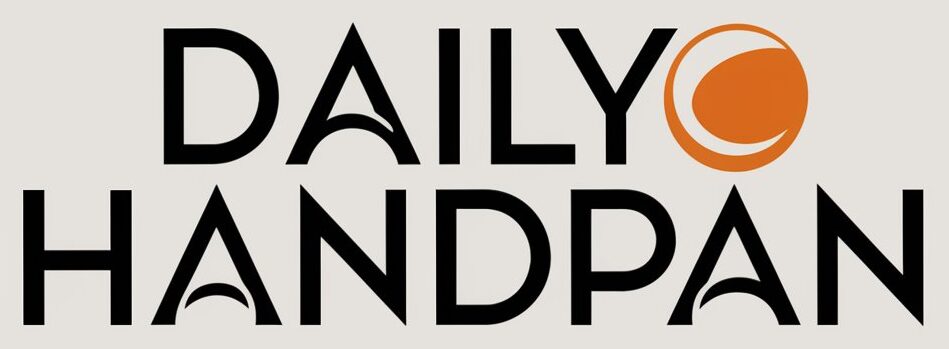The handpan, an unusual and captivating musical instrument, has a way of enchanting anyone who hears its ethereal tones. This wonder of sound and craftsmanship has found a special place in modern music and meditation practices alike. But who are the maestros behind this spellbinding instrument? Enter the handpan gurus – experts who craft not just melodies, but also shape minds and souls through their expertise.
The History and Evolution of the Handpan
The handpan, often referred to as a ‘hang drum’, came into existence in the early 21st century. Originating from the Hang, which was developed in Switzerland by PANArt, this instrument quickly gained popularity worldwide. The handpan is a convex steel drum played with the hands, producing a unique percussive yet melodic sound. As demand for the instrument grew, so did the variations in design and tuning, giving birth to various types of handpans.
The Craftsmanship Behind Handpans
The creation of a handpan is an art that requires precision and dedication. The process starts with selecting and shaping high-quality steel. Skilled artisans then meticulously hammer the steel into the desired shape before tuning each note by hand. This craftsmanship ensures that each handpan has a unique voice and personality. The art of handpan making is often passed down through generations, with each guru adding their personal touch to the intricate process.
The Role of Handpan Gurus
Handpan gurus are more than just skilled craftsmen; they are also educators, performers, and spiritual guides. They help enthusiasts understand and appreciate the instrument on a deeper level. By conducting workshops and classes, they teach not just the technical skills required to play the handpan, but also the emotional and meditative aspects of its music.
Learning from the Gurus
Anyone can pick up a handpan and create sound, but to produce music requires guidance and practice. Handpan gurus provide this guidance through various means:
- Workshops: These sessions allow participants to gain hands-on experience under the guidance of a guru. They learn the basics of handpan playing, including hand techniques and rhythm.
- Online Classes: With the advent of digital learning, many gurus offer comprehensive online courses that allow students from all over the world to learn at their own pace.
- Personal Mentorship: For those looking for individualized attention, many gurus offer one-on-one mentorship programs. This personalized training often involves not just musical instruction but also guidance on personal growth and meditation.
The Therapeutic and Meditative Aspects
The handpan’s soothing tones are known to have therapeutic effects. Many handpan gurus incorporate meditation and mindfulness techniques into their teaching, promoting mental well-being alongside musical skill. The instrument’s calming sound can help reduce stress, improve focus, and even aid in healing processes.
Community Building Through Handpan
Handpan gurus play a pivotal role in building communities. They organize events, festivals, and retreats where musicians and enthusiasts can come together to share their love for the instrument. These gatherings not only foster a sense of community but also provide a platform for cultural exchange and artistic collaboration.
The Future of Handpan Music
The handpan’s journey is far from over. With its growing popularity, the instrument continues to evolve. Innovations in design and sound are continuously being explored, and new playing techniques are being developed. Handpan gurus are at the forefront of this evolution, ensuring that the instrument remains relevant and continues to captivate audiences around the world.
Conclusion
The handpan is more than just an instrument; it is a bridge between the musical and the spiritual. Handpan gurus, with their expertise and passion, play a crucial role in maintaining this delicate balance. They are the custodians of a craft that brings peace, joy, and healing to many. Whether through crafting the perfect handpan, imparting knowledge, or building communities, these gurus continue to shape melodies and minds, leaving a lasting impact on the world of music.
Frequently Asked Questions
-
What is the difference between a handpan and a hang drum?
While both terms are often used interchangeably, the Hang refers specifically to the original instrument developed by PANArt in Switzerland. ‘Handpan’ is a broader term that encompasses various similar instruments made by other artisans and manufacturers.
-
How long does it take to learn to play the handpan?
The learning curve for the handpan can vary greatly depending on the individual’s musical background and dedication. Basic rhythms and techniques can be learned in a few weeks, but mastering the instrument could take years of practice.
-
Can handpans be tuned to different scales?
Yes, handpans can be tuned to various scales, allowing for a wide range of musical expressions. Common scales include minor, major, harmonic minor, and various ethnic and exotic scales.
-
Are there any prerequisites to start learning the handpan?
There are no strict prerequisites to start learning the handpan. However, having a basic understanding of rhythm and melody can be very helpful. Other than that, all you need is a handpan and the willingness to practice.
-
Where can I find a handpan guru for learning?
You can find handpan gurus through online platforms, music schools, or by attending handpan events and festivals. Many gurus have an online presence and offer virtual classes or tutorials, making it easier to access their teachings no matter where you are.





